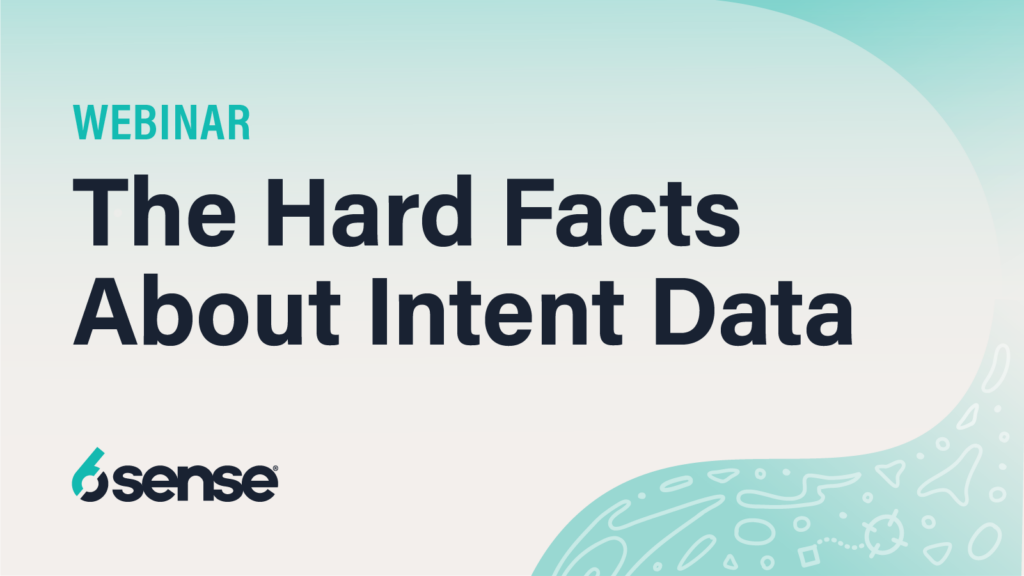Transitioning your revenue team from a lead-based approach to an account-based approach is super challenging, especially because there’s no “one size fits all” way to do it. Some organizations want to go all-in on ABM from Day One, while others — perhaps most — want to make the shift a gradual one.
If you’re considering an account-based approach for your organization, know that you don’t have to make the switch overnight.
Here are several ways your revenue team can make small changes that transition it from MQLs to a hybrid approach … and then finally to a superior account-based approach.
Crawl: Just a Pinch of ABM
In the initial stages of your ABM journey, your sales and marketing teams can keep focusing on leads and lead scoring. But to get your revenue team considering the account-based aspect of its leads, start incorporating account-level insights into your lead scoring.
At 6sense, our customers can do this with our Lead Management tool, which helps score and prioritize individuals engaging with inbound campaigns and other demand-gen channels. In addition to traditional lead scoring factors like demographics and behavior, the Lead Management tool also includes account-level dimensions such as the buying stage or ideal customer profile fit.
This augmented scoring enables your sales reps to keep doing what they’re used to doing, but with greater success. The results from this improved scoring should help sales understand the ABM philosophy and the value of viewing prospects at the account level.
Walk: A Hybrid Approach
At this stage, marketing is still doing lead-gen and the MQL hasn’t quite gone anywhere, but it’s time to switch your main focus from the marketing qualified lead to the marketing qualified account. For 6sense customers, that means focusing on the 6sense qualified account, or 6QA.
Just like an MQA, the 6QA measures the overall engagement of an entire prospective account. But what makes it unique is the addition of intent data as well as AI-powered predictions that determine which stage of the buyers’ journey accounts are in.
Once you’re focused on the MQA or 6QA, it’s also time to focus on the heart of the revenue team — your BDRs.
Now your Business Development Representatives can prospect smartly and proactively engage accounts because they’re empowered with data that tells them which ones are ready to buy. They know which stakeholders to talk to, what concerns them most based on the role, and (thanks to buyer intent data) they also know what specific needs or problems they’re looking to address.
Alignment of marketing and sales is critical for ABM, and that should become a major goal at this stage. Marketing must shift some of its focus from lead-gen to outbound, providing BDRs with nurturing emails and educational resources (such as blogs, explainer videos, ebooks, and white papers) to send to prospects.
Run: Welcome to Account-Based Everything
You’ll know you’ve successfully transitioned to ABM when:
- BDRs are proactively prospecting to accounts that are the right fit, they consistently know the right people to talk to, and they know the right messaging to use
- Marketing is working with sales to move prospects down the pipeline with outbound campaigns that are carefully targeted and see higher conversion rates
- Sales and marketing are fully aligned, looking at and working toward the same success metrics
- Your revenue team has completely shifted its priority from MQLs to MQAs, or 6QAs
At this stage of your account-based journey, the MQL is de-prioritized, but shouldn’t be entirely discarded. ABM thought leaders (including folks at 6sense) often say “the MQL is dead,” but this is what it actually means:
Selling exclusively to individuals is outdated thinking. Instead, broaden your focus and sell to accounts.
So why keep the MQL at all? Because you are selling to accounts, but in order to do that, you must engage with individuals.
When someone on a buying team requests a demo or registers for an event, it’s a hand-raise for attention. It’s a fast track to relationship-building with a sales rep that leads to deeper education, conversations with other stakeholders, and ideally, the signed contract.
Conclusion
Transitioning from traditional marketing and sales approaches to embracing ABM doesn’t need to happen all at once. The pace largely depends on:
- How much change your organization can handle
- How fast it embraces the ABM mindset, and
- What kind of tools and platforms you have to support your ABM efforts
New endeavors can be challenging and complicated, but shifting to ABM doesn’t have to be. Aside from adopting an account-based mindset, day-to-day tasks shouldn’t be so different from what your revenue team is already doing.
Getting prospects interested in and engaging with your brand, speaking to individuals, and building relationships are all activities marketing and sales should be engaged in — regardless of the stage of your ABM transition.






